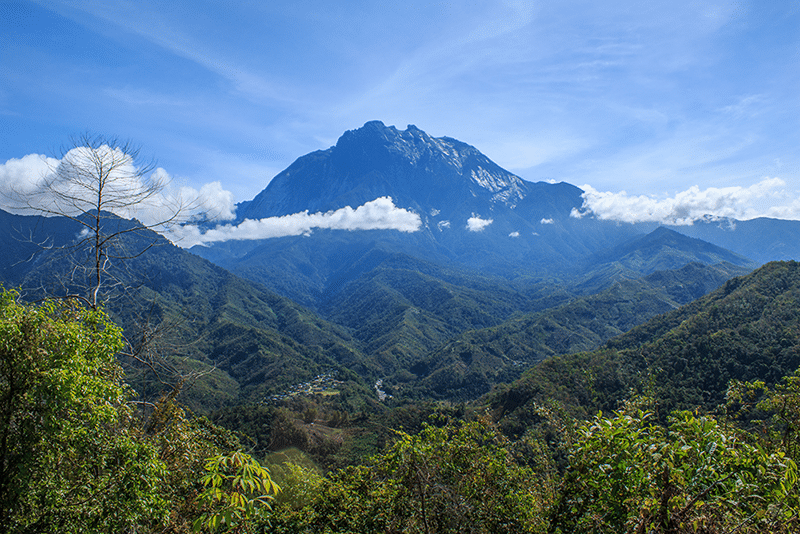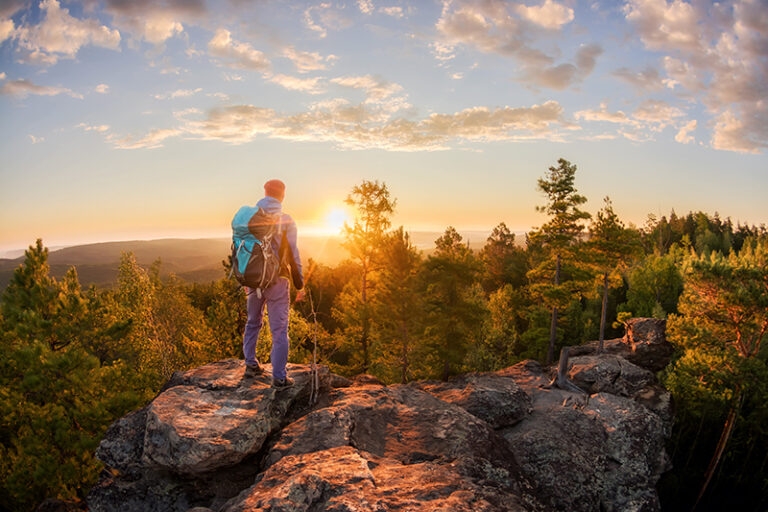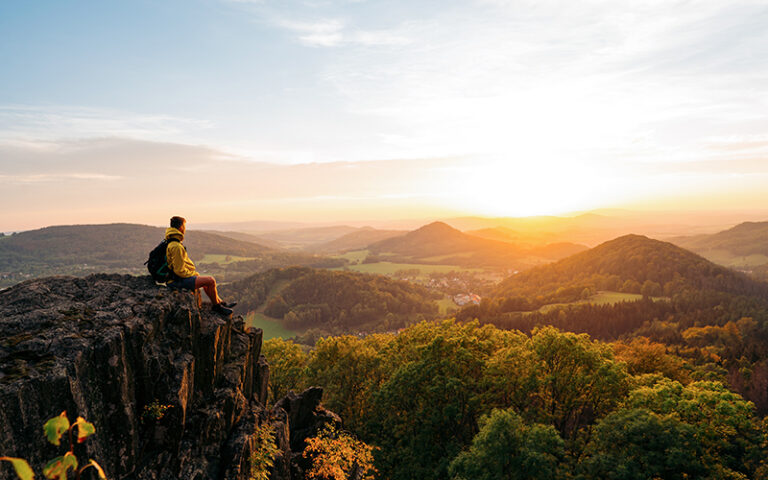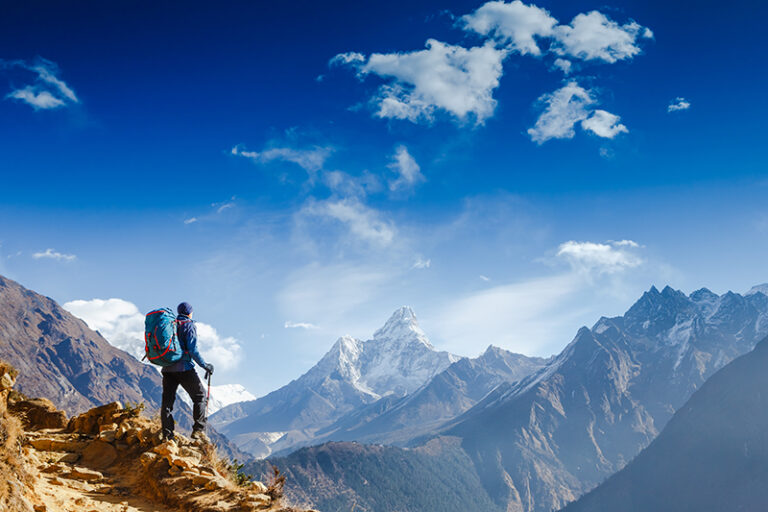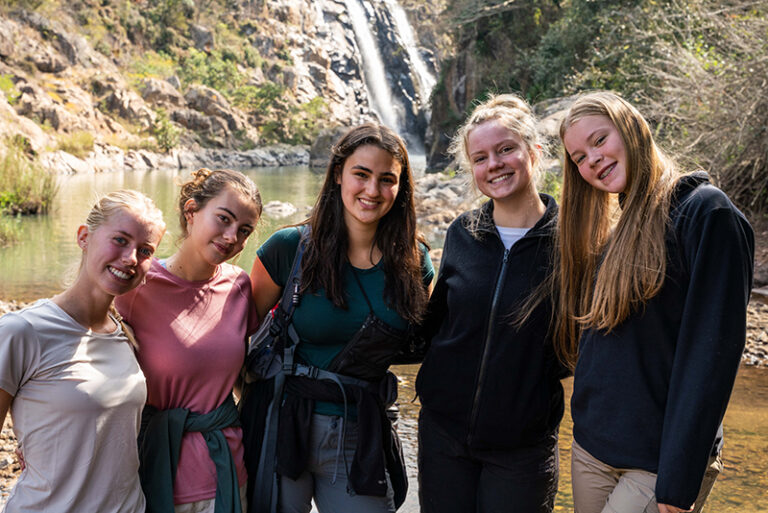The dark, angular silhouette of Mount Kinabalu looming in the distance was an intimidating sight for Scarlett Caporn as she trekked through the rugged landscape, embracing the principles of sustainable travel. “I could see this black, majestic mountain jutting out of the clouds above me,” the 17-year-old said. “It made me feel so small.”
And no wonder. Towering 4,095 metres above sea level, Mount Kinabalu is the highest mountain in Borneo and Malaysia, requiring physical and mental strength to climb it sustainably. Crowned with granite spires, it’s a UNESCO World Heritage site. It’s also rich in wildlife – if you’re lucky, you could spot an orangutan or leopard.
Mount Kinabalu is just one of Borneo’s many peaks that promote sustainable travel, crisscrossed with superb trekking routes. Nearby, the Guas Nabalu trail is lush, green, and off the beaten track, providing an opportunity for ecologically conscious explorations. With thick jungle, cascading waterfalls, and camping beneath star-studded skies, it offers a tantalising taste of sustainable trekking in Borneo.

This was the trail that Scarlett tackled in 2022. As well as views of mighty Mount Kinabalu, the route takes in local villages, pineapple farms and the Kiau viewpoint – the ideal place to gather around for music and folklore stories. There’s also the push to the summit of Nuluh Lingion (1,420m) – with epic views to reward you.
As well as tough terrain, Scarlett and her team had 80% humidity to deal with as they scaled the first third of the mountain. “That trek was the hardest thing I’ve ever done,” Scarlett said. “Especially the humidity and steepness of that first day. It was a massive adjustment to Borneo’s city life, which we had just experienced.”
Steep gradients and humidity aren’t the only challenges of trekking in Borneo. If you’re tackling Mount Kinabalu itself, you might be following the Kota Belud trail. Setting off from the Kinabalu Park HQ (Timpohon Gate), the route climbs to Laban Rata Resthouse (3,273m) – a mountain hut where you rest until the push to the Low’s Peak summit (4,095m).

Trekking at such a high elevation poses the risk of altitude sickness, and the thin air makes the ascent all the harder. Pacing yourself and keeping hydrated is vital. The trek is also so varied that you need to pack for all conditions. The initial part can be very hot, meaning you’ll probably be trekking in your shorts and T-shirt. Meanwhile, the summit can be extremely cold, requiring hats, gloves and waterproofs.
Excitement builds as teams wake up in the small hours for the summit push, using head torches in the darkness. Parts of this route also have technical sections – you have to scramble and use fixed ropes near the summit, requiring concentration and steady footwork. Some find the way back down as tough as the climb itself – it’s a long descent (from the summit to the trek start point in one day), which can be super tiring on your legs.

With all these challenges, having a supportive team to pull you through makes all the difference. Even on a less severe climb like the Guas Nabalu trek, teamwork is crucial.
“I was lucky to have a team that helped and encouraged each other,” Scarlett said. “We all had weak moments where all we wanted to do was sit down, but we would share snacks and water and encourage each other to take the next step. There were lots of mixed levels of fitness in my team and people trekked at different speeds, but we stuck together and it meant you could enjoy your surroundings at your own pace, in your own way.”

Another huge contributing factor to Scarlett’s enjoyment of the trek came in the form of a sprightly local lady called Kitty. As well as being a mum of six and the owner of the team’s homestay, she was also their mountain leader. “Kitty was just amazing,” Scarlett said. “We were all shocked to learn that she was in her fifties – she would trot up the mountain like it was the easiest thing in the world. She’d done it all her life.”
Kitty’s passion for the peaks was sparked by her father, who had been a mountain leader before her. “Kitty was inspired by her father and learned everything she knew from him,” Scarlett said. “Her energy and passion were infectious. We all cried when we had to say goodbye to her at the end of the trek.”
Trekking beside Kitty gave Scarlett and her team a rare glimpse into local life. When she wasn’t guiding, Kitty would run her local coffee business. The team trekked past coffee plantations and even had a go at making coffee in Kitty’s homestay, learning how to roast the beans and crush them in a giant pestle and mortar. “It was very rewarding to see the process from start to finish and to see how locals support themselves through independent businesses,” Scarlett said. “We also trekked through wild pineapple farms and our guides cut the fruit up for us – it was a delicious snack.”

The landscape around Mount Kinabalu is known for its rich and varied wildlife, and trekkers are immersed in the nature around them. For Scarlett, the pinnacle of this came on the first night of the trek, when her team camped out in hammocks. “I’ll never forget hearing the sounds of nature as I fell asleep,” she said. “We slept a second night in huts near the river and saw incredible butterflies and giant millipedes. There were even bioluminescent mushrooms. Our guides taught us how to make traps for frogs – it tastes like chicken! I also found a butterfly wing on the forest floor – it’s my most prized possession now.”

For Scarlett, trekking beneath Mount Kinabalu not only strengthened her physical and mental fortitude and connected her with locals, but it also helped set her up for future situations. “I often catch myself saying: ‘If I can climb mountains in Borneo, then I can do anything’,” she said. “My biggest tip would be to try not to be intimidated by the prospect of the trek. Focus on what’s around you instead of struggling to take the next step.”
Written by Ellie Ross
